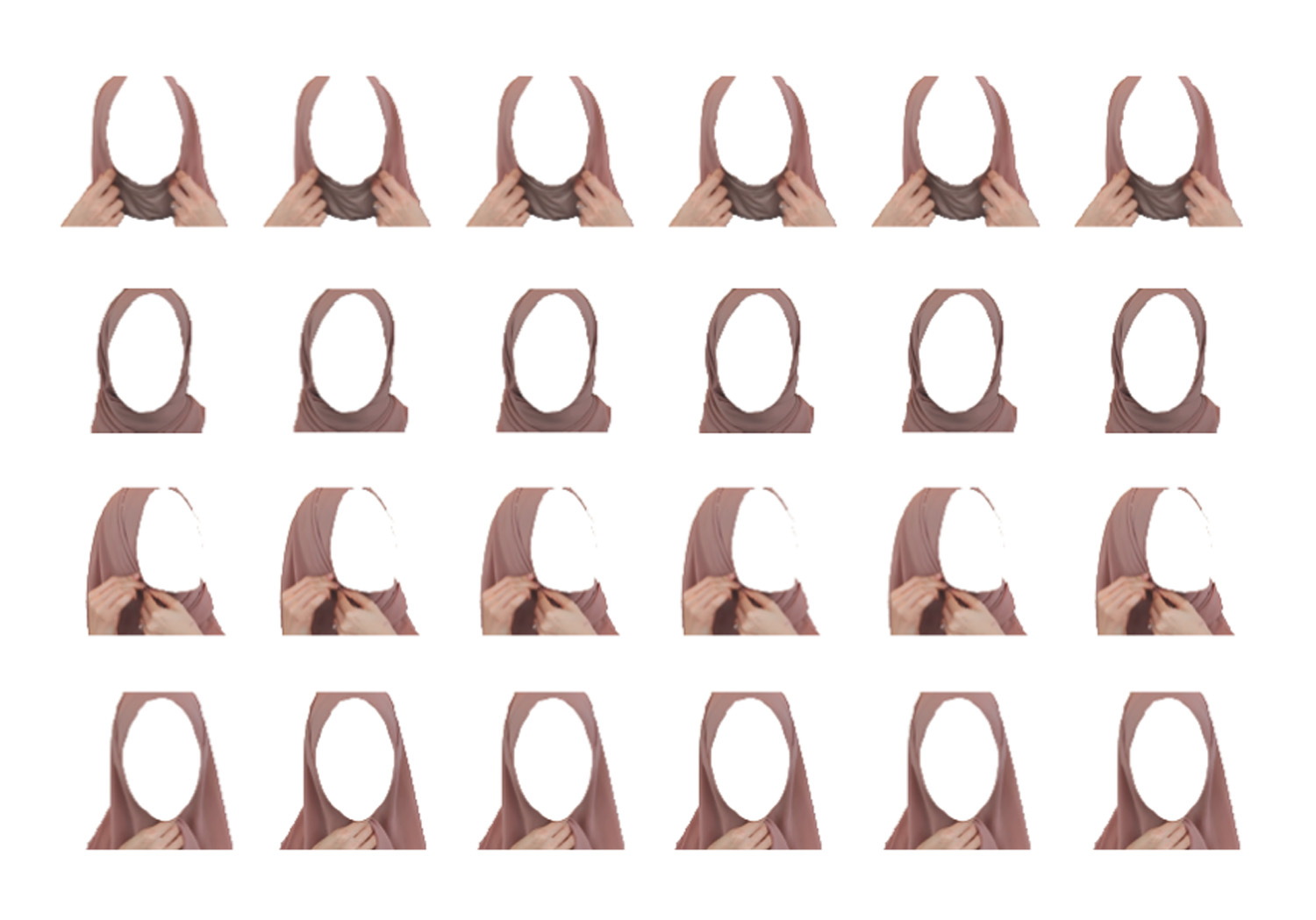
Terror of Beauty is a debut solo exhibition by Sarah Amrani at Foam in Amsterdam. The Rotterdam-based artist has been working on the show since 2017, which examines the intersection between technology, culture and beauty standards.
But the timing of its opening today (6 Dec 2024) is particularly apt. Just last month, at its European safety forum in Dublin, social media platform TikTok announced new restrictions for under-18s, with users to be blocked from applying ‘glow up’ type filters that distort their appearance: artificially smoothing skin, enlarging features, or altering skin tone. While fun filters providing vintage tints, rainbows and animal ears have existed for over a decade, employed largely to add colour to otherwise routine posts, more recently there’s been a notable revision of our relationship with filters, as those like ‘Bold Glamour’ transform the way we present ourselves online (and subsequently reconsider how we look offline).
‘Terror of Beauty’: Sarah Amrani at Foam

‘It’s part of our generation, growing up in the 2000s with all these magazines and reality TV. Popular culture shapes our perception of beauty and I’ve always been fascinated by it.’
Sarah Amrani
‘The initial project focused on how social media platforms and beauty vlogs impact our perception of beauty and identity. Now, just a couple years later, technologies like AI and Chat GPT have shifted the focus,’ explains Amrani, speaking over Zoom ahead of the exhibit, held in Foam’s 3h project space. ‘There was this online editing tool called Anaface [first launched in 2009], that would rate your beauty and recently I had some conversations with Chat GPT and it said the same thing. So not much has changed but AI is more intertwined with our daily lives.’


‘I talk about it a lot with my friends,’ she continues, speaking on her relationship to beauty. ‘It’s part of our generation, growing up in the 2000s with all these magazines and reality TV. Popular culture shapes our perception of beauty and I’ve always been fascinated by it.’
In addition to the media she consumed in adolescence, Amrani recalls watching her grandmother doing her make-up at home. ‘She would actually say “I’m going to put on my face”,’ the artist notes. In Amrani’s mind, this helped cement her preoccupation with the face as a kind of battleground. (In fact, an earlier subtitle for the Terror of Beauty was The Face as a Battleground of Beauty).


Interrogating how the algorithm operates and the role of bias in these digital spaces – with a particular focus on how this pertains to women from non-Western backgrounds – Amrani’s work assumes multiple forms, including photography, video and textile-based pieces. Here, visitors can watch the Anaface app analyse the symmetry of the artist’s face and compute her ‘beauty score’.
At the same time, on another screen, women can be seen administering Botox injections, as a voiceover describes how ‘make-up accentuates their frown lines’. Elsewhere, and underscoring the perspective from which the wider project developed, the artist reflects on her dual Dutch-Moroccan heritage, referencing Faegheh Shirazi’s 2001 book The Veil Unveiled, with a series of images that separates a woman’s face from her hijab. Here, fragmentation is used as a device to assess ‘the breakdown of beauty and identity in this digital age’.


‘I started deconstructing these online [make-up] tutorials and became fascinated by how the hijab operates visually, creating a framework and emphasising the face.’
Sarah Amrani
While Amrani herself doesn’t wear the hijab (despite growing up within the culture (she mostly considers herself an outside observer of Islam) she conceived the idea for Terror of Beauty after watching online make-up tutorials by Muslim beauty vloggers.
‘A lot has changed in terms of the visibility of hijab-wearing women in the beauty and fashion industry, but in 2017 it was a really new community in the online space,’ she says, alluding to trailblazers like Nura Afia, the American beauty vlogger who became the first hijabi CoverGirl ambassador in 2016. ‘Coming from a bi-cultural background myself, I felt very connected to this community. So I started deconstructing these online [make-up] tutorials and became fascinated by how the hijab operates visually, creating a framework and emphasising the face.’
‘By incorporating the hijab in the digital space, it exposes beauty standards and transcends its political and cultural meaning, which I find interesting,’ Amrani continues. ‘It means there’s a broader discussion for how new technologies impact modern beauty standards within different communities.’
‘Other young girls, for example, are starting to use face filter tattoos, like traditional Berber tattoos from northern parts of Africa,’ she says. ‘[Tattooing] is not [a common practice] with the younger generation, but online this group is reconnecting with these roots,’ she concludes. ‘So on the one hand AI reinforces beauty stereotypes, but at the same time it’s possible to create new forms of self-expression and cultural identity, too.’
‘Terror of Beauty’ by Sarah Amrani runs from 6 Dec 2024 - 26 Feb 2025 at Foam, Amsterdam.







